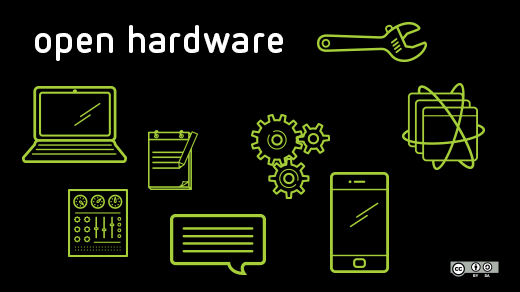Last week I bought a Raspberry Pi 2 computer.
I didn't pay anything for the USB keyboard and USB optical mouse that I use with this tiny computer, because they were donated to the public library where I work. Two weeks ago someone dropped off 10 new USB keyboards and 10 new USB mice; they were surplus from a computer upgrade cycle at a nearby office. To be sure, the value of the $35 USD Raspberry Pi 2 computer is extended when free USB keyboards and mice are available. There is a role, then, for schools, libraries, and makerspaces to collect these donated items in order to redistribute them to those who need them.
In this article, I'll share some ideas for how schools, libraries, and makerspaces can similarly expand access to open source hardware.
Extra keyboards and mice always come in handy, but so too do extra monitors. An extra monitor can breathe life back into a laptop whose display stopped working. I love using 20-inch monitors with Windows XP laptops from eBay that I upgraded to Linux. These laptops currently sell in the $40 to $70 USD range on eBay.
If you can give someone a nice large monitor, that person might have a friend who can cover the cost of the Windows XP laptop. Then, presto! That person has a lovely Linux laptop with a large display. To see how this might work, check out my $20 eBay laptop video.
Beyond monitors, donated, small size LCD televisions, in the 30-inch to 35-inch range, are excellent for digital signage projects with the Raspberry Pi. People donate these when they (often) upgrade to a larger one. These televisions can also become available when a community member passes away.
Your school, library, or makerspace doesn't need to store donated items, either. Your function can be to be a conduit between donor and receiver. Use a Google Form to collect the names and contact info for community members seeking donated computer hardware. Find one or more volunteers to match these individuals with donors who contact you with items they want to give away. Then the school, library, or makerspace becomes simply the location where the two parties meet to effectuate the transfer.
Or, you might have one community member who volunteers to store donated keyboards and mice at his or her house. Another community member volunteers to store 20-inch LCD monitors. A third community member stores donated LCD televisions. By sharing the burden this way, your school, library, or makerspace can help bridge the digital divide.
More bridging of the divide happens when you proceed the open source way. Can't you imagine it: In 30 years time some individual will relate the story of how they saved their allowance to buy a Raspberry Pi 2 computer. Maybe they received support from their local school, library, or makerspace for the keyboard, mouse, monitor, and power supply. That's when the true vision of open hardware blossoms.
We can make that happen without too much extra work. How is your community bridging the digital divide using open source? Leave comments below or submit your own blog post to Opensource.com.
Editor's note: Opensource.com Community Moderator Phil Shapiro has been working on digital inclusion most of his adult life. He recently launched a crowdfunding campaign to raise money for scholarships to a new, maker summer camp.







Comments are closed.